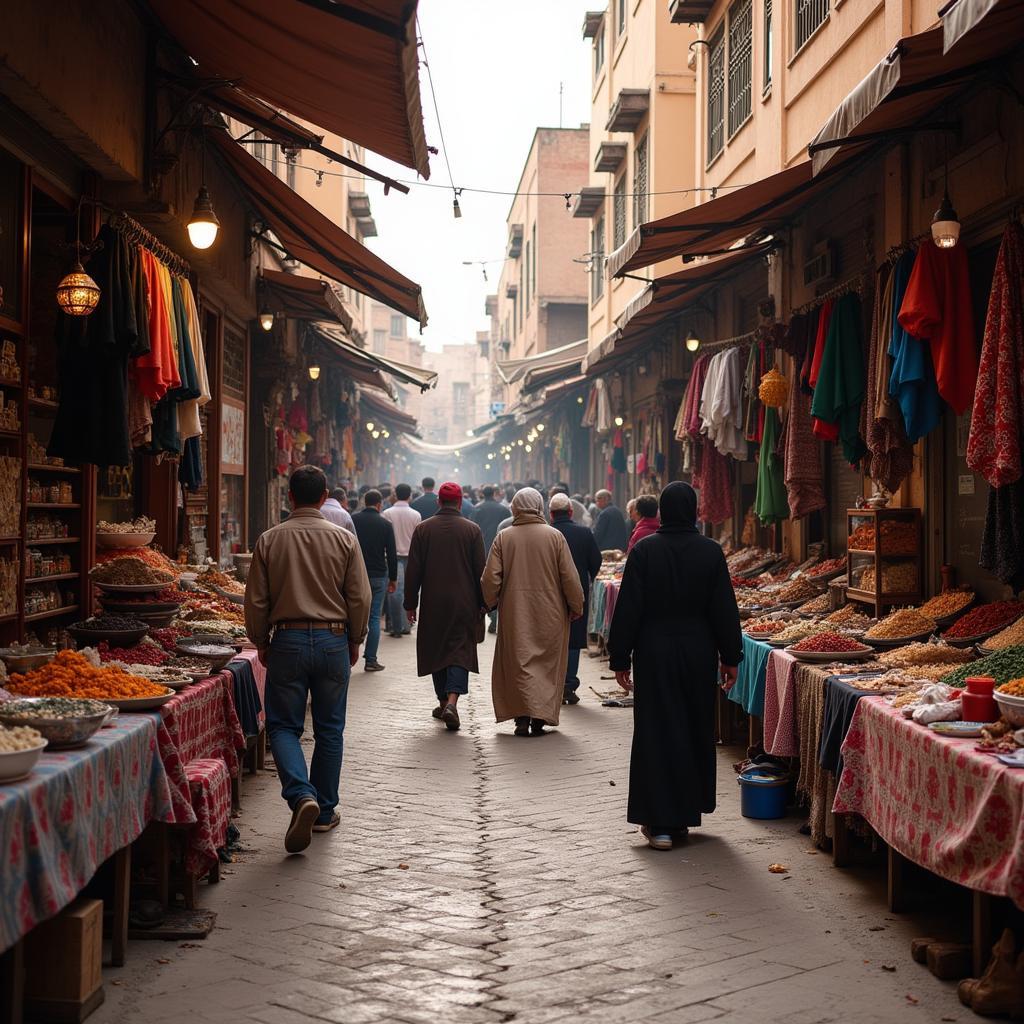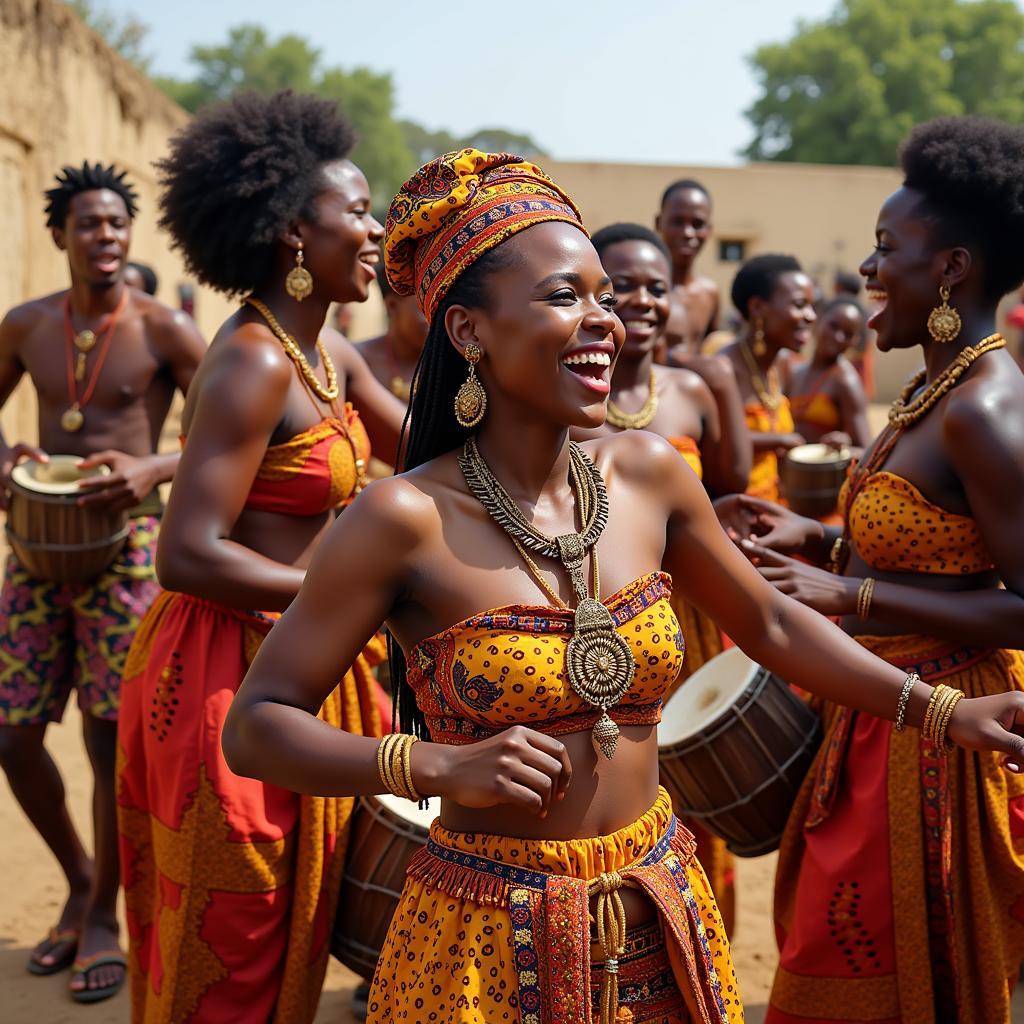Exploring the Majestic World of African Headdresses
African Headdresses are more than just decorative headwear; they are powerful symbols of status, identity, and cultural heritage. These elaborate creations, crafted with meticulous detail, speak volumes about the wearer’s tribe, age, marital status, social standing, and even spiritual beliefs. From the towering gele of Nigeria to the feathered crowns of Zulu warriors, each headdress tells a unique story, offering a glimpse into the rich tapestry of African traditions.
The significance of African headdresses transcends mere aesthetics. They are integral to ceremonies, rituals, and everyday life, reflecting the deep connection between people and their cultural heritage. These adornments often incorporate materials found in nature, such as feathers, beads, shells, animal hides, and plant fibers, demonstrating a profound respect for the environment. The craftsmanship involved in creating these headdresses is often passed down through generations, ensuring the preservation of ancient techniques and artistic traditions. Understanding the symbolism behind these magnificent creations unlocks a deeper appreciation for the diverse cultures that thrive across the African continent.
Unveiling the Symbolism of African Headdresses
African headdresses carry profound meanings, acting as visual narratives of individual and communal identities. A headdress can instantly communicate a person’s role within society, their lineage, and their achievements. For example, the intricate beadwork on a Zulu married woman’s isicholo signifies her marital status and the respect she commands within her community. Similarly, the majestic feathered headdresses worn by Maasai warriors denote their bravery and prowess in battle. These headdresses are not merely accessories; they are embodiments of cultural values and beliefs. They are a testament to the ingenuity and artistry of African peoples.
A Journey Through Diverse African Headdress Styles
From the arid landscapes of the Sahara to the lush rainforests of the Congo Basin, African headdresses exhibit a remarkable diversity of styles. This variety reflects the continent’s vast array of cultures, each with its unique artistic expressions. The towering geles worn by Yoruba women in Nigeria are a testament to their elegance and sophistication. These elaborate headwraps, often made of brightly colored fabrics, are carefully sculpted into impressive shapes and sizes. In contrast, the simpler, yet equally striking, headwraps of the Himba women of Namibia, made of ochre-colored clay and adorned with cowrie shells, symbolize their connection to the earth and their ancestral heritage.
You can learn more about other traditional African clothing and accessories such as African beads.
How are African Headdresses Made?
The creation of African headdresses is often a labor of love, involving intricate techniques passed down through generations. Materials are carefully selected and prepared, often involving complex processes such as dyeing, weaving, and beading. For instance, the intricate beadwork on many headdresses requires immense skill and patience, with each bead meticulously placed to create intricate patterns and designs. Feathers are carefully cleaned, sorted, and attached to create stunning plumes, while animal hides are tanned and shaped to form sturdy structures. The creation of an African headdress is not merely a craft; it is an art form that embodies the spirit and creativity of African cultures. Check out more details about African heidels.
What do African Headdresses Tell Us?
African headdresses offer a window into the rich history and cultural heritage of African communities. They provide valuable insights into social structures, religious beliefs, and artistic traditions. By studying these headdresses, we can gain a deeper understanding of the values, customs, and worldviews of diverse African cultures. They serve as a reminder of the importance of preserving cultural heritage and celebrating the diversity of human expression.
Conclusion
African headdresses are much more than simple adornments; they are powerful symbols of identity, status, and cultural heritage. From the intricate beadwork to the vibrant feathers, each element tells a story, reflecting the rich tapestry of African traditions. Exploring the world of African headdresses is a journey into the heart of African cultures, offering a glimpse into the beauty, creativity, and profound symbolism that define these diverse communities. Explore more about African culture dance and African ballroom dance for a deeper understanding of African culture.
FAQ
-
What materials are used to make African headdresses?
African headdresses are made from a variety of materials including feathers, beads, shells, animal hides, plant fibers, and fabric. -
What is the significance of a Zulu isicholo?
The isicholo is a traditional Zulu married woman’s hat, symbolizing her marital status and respect within the community. -
What do the feathered headdresses of Maasai warriors represent?
The feathered headdresses of Maasai warriors denote bravery and prowess in battle. -
Are African headdresses still worn today?
Yes, African headdresses are still worn today, both for ceremonial occasions and everyday life, although their use may vary depending on the specific culture and context. -
Where can I learn more about African headdresses?
Museums, cultural centers, and online resources offer a wealth of information on African headdresses. You can also learn more about African tribes costumes. -
How can I show respect when learning about African headdresses?
Approach the subject with an open mind and a willingness to learn. Avoid making generalizations and appreciate the unique significance of each headdress within its cultural context. -
Are there any ethical considerations when purchasing African headdresses?
Ensure that any headdress you purchase is ethically sourced and supports the artisans who create them. Avoid buying replicas or imitations that may exploit cultural heritage.
Common Scenarios Involving African Headdresses
- Cultural ceremonies: Headdresses play a crucial role in weddings, funerals, initiations, and other important ceremonies.
- Festivals and celebrations: Headdresses are often worn during festivals and celebrations as a way of expressing cultural pride and identity.
- Everyday life: In some cultures, headdresses are worn as part of everyday attire, reflecting social status or personal style.
- Museum exhibits: Headdresses are often displayed in museums as artifacts of cultural heritage.
Further Exploration
- Explore the history and significance of specific African headdress styles.
- Research the different techniques used in creating African headdresses.
- Learn about the cultural context in which African headdresses are worn.
If you need any further assistance, please do not hesitate to contact us. Call us at +255768904061, email us at kaka.mag@gmail.com, or visit us at Mbarali DC Mawindi, Kangaga, Tanzania. We have a 24/7 customer service team available to assist you.

